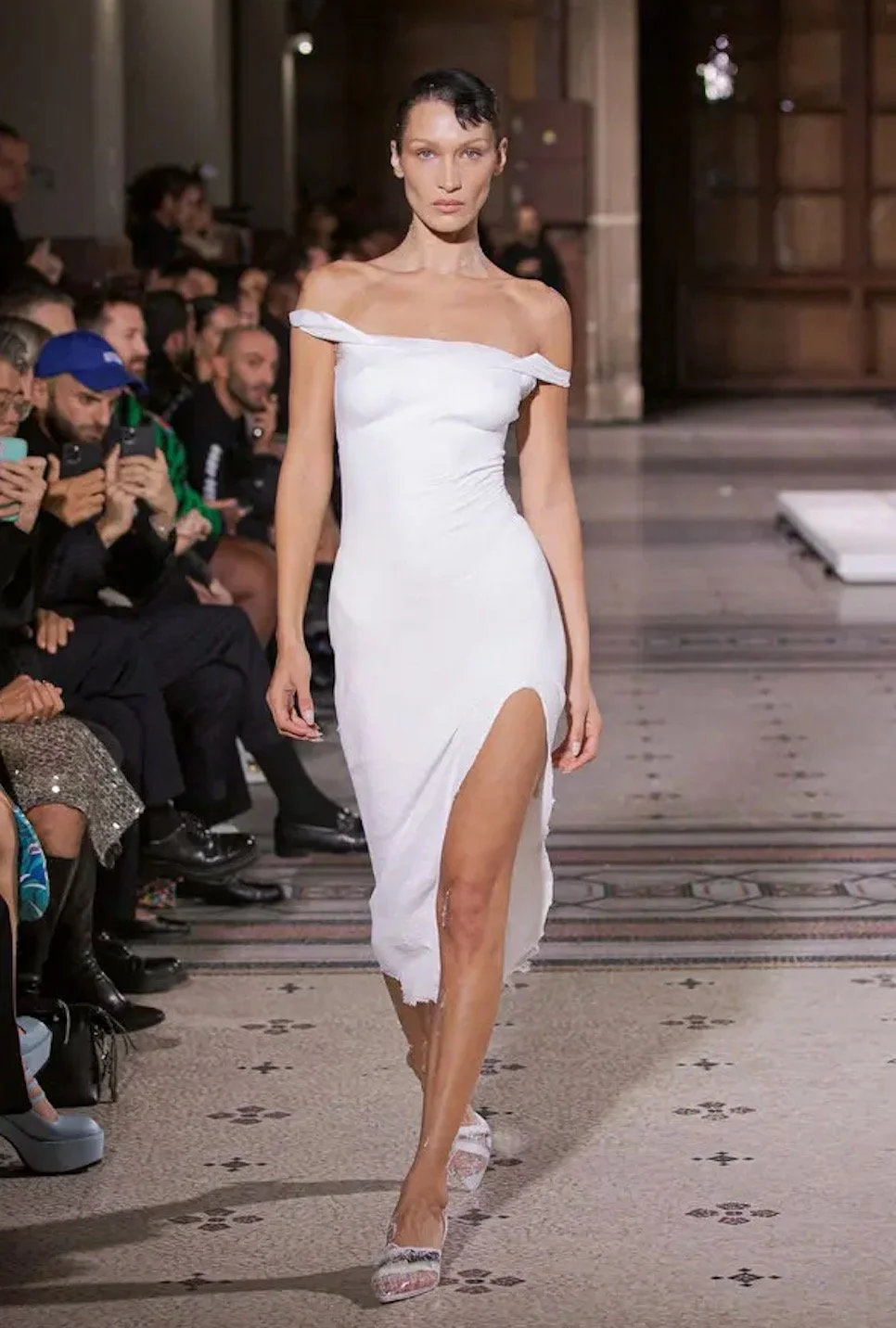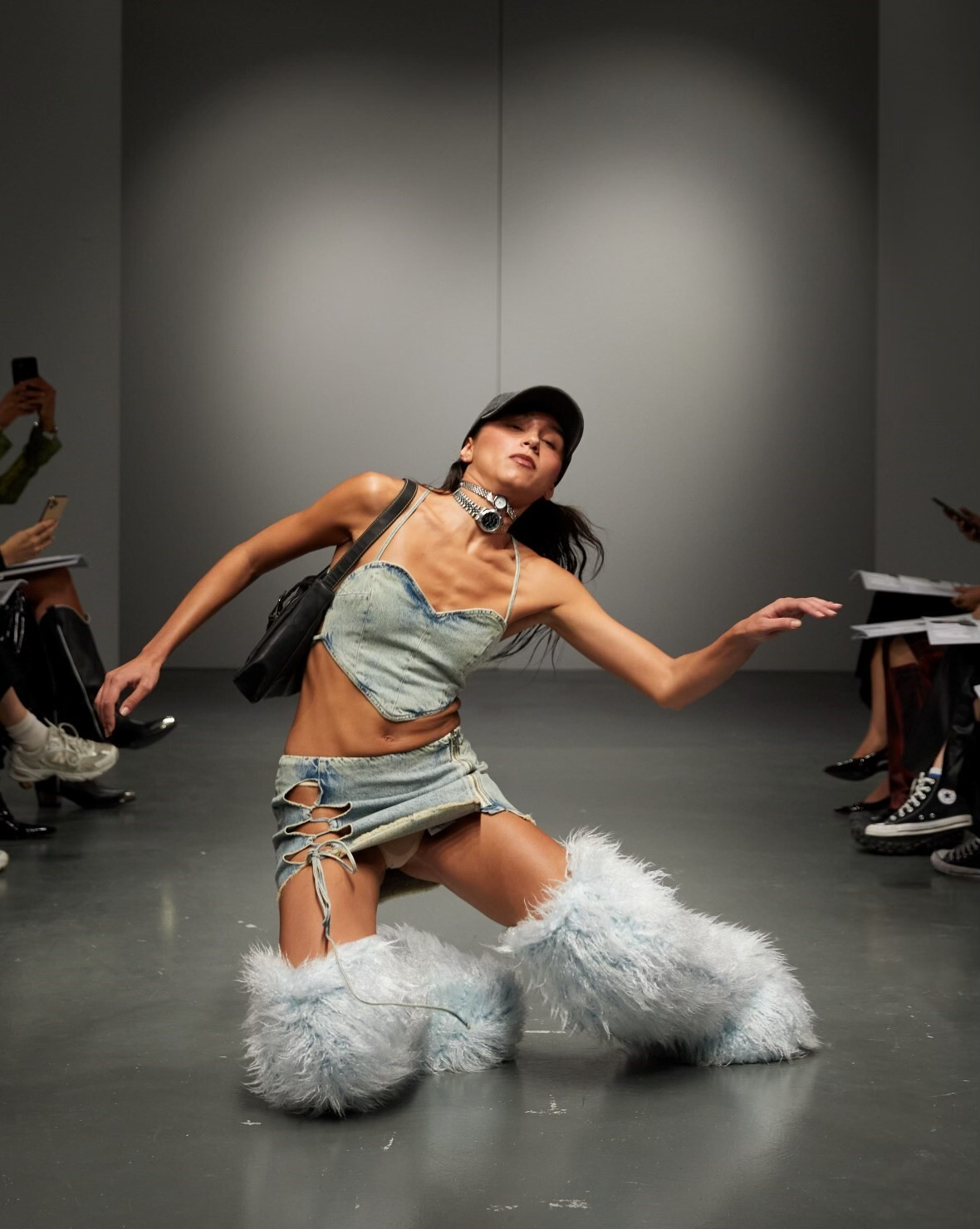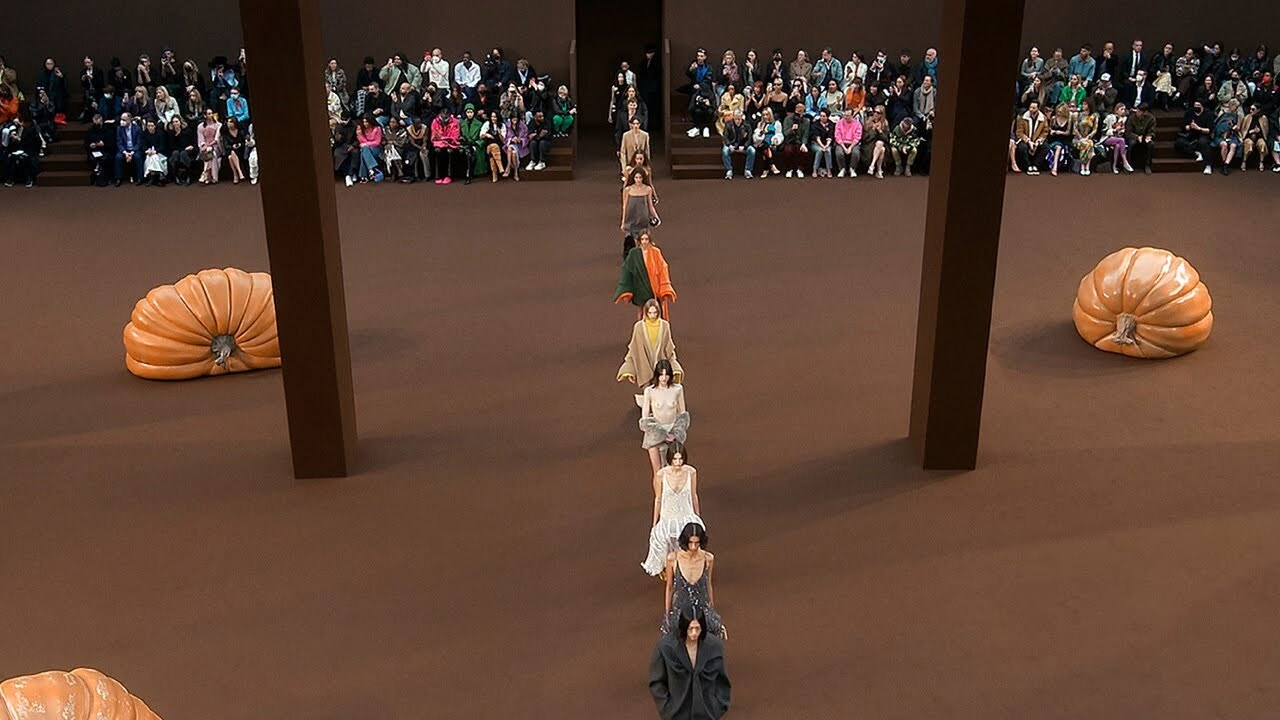Runway Stunts: Attention Seeking or Avant-Garde Genius?
The runway is no stranger to acts of performance art, an opportunity for brands to showcase their collections’ themes through eye-catching novelties and thought-provoking stunts. Alexander McQueen was known for his radical and imaginative runway shows, which often sought to exploit controversial themes through his designs, including romanticism, sexuality, and death. McQueen’s runway is remembered and revered for its dramatic and theatrical elements, including his Spring/Summer 1999 show, which featured model Shalom Harlow being spray painted by robots. However, McQueen’s stunts were never without intention, the iconic spray painted dress serving as a metaphor to reflect the violence which creativity imposes on both materials and audience.
In today’s social media society, runway stunts often go viral online, benefitting the brand with fame and publicity. In recent fashion weeks, hardly a show can be remembered without a shocking gimmick. The growing prevalence of shock-value in fashion raises questions of the merit behind these stunts. Is there intention behind the gimmicks, or do they simply cater to the modern social media attention economy?
Last October, Coperni cultivated their own viral moment as Bella Hadid walked onto a mirrored platform wearing only a pair of nude underwear, using her arms to cover her breasts. She was then spray-painted by two men with Fabrican, a white substance which turns into a solid, creating an off-the-shoulder cocktail dress. The internet was enthralled by Coperni’s stunt, and I can recall being mesmerized watching it unfold from my phone. It certainly gained Coperni a lot of attention, a Parisian brand previously under radar to the general public.
However, critics drew attention to the seemingly meaningless intention behind the mid-show dress creation. Harper’s Bazaar’s Rachel Tashjian commented on her struggle to see or feel anything other than discomfort while watching Hadid manipulate her body to the whims of the two men and their canisters. Thinking critically, I questioned my own appreciation of the stunt. Did it have anything to do with the fashion itself? Or was I more so impressed with Bella Hadid’s ability to look absolutely stunning in a spray painted dress? If we’re being honest, the moment seemed centered on Hadid’s body, rather than contributing to Coperni’s credibility as a fashion house.
Other runway stunts include Nanna and Simon Wick’s autumn/winter 2023 show for (Di)vision during Copenhagen Fashion Week. Model Sarah Dahl shocked audiences, closing the show as she stood and walked from her seat at a dinner table in the audience, taking the table cloth and all its contents with her as part of her dress’s train. The moment was shared by the brand on instagram with the caption “What are you bringing to the table? @sarahdahll ‘I am the table’.” While it was certainly a shocking moment, generating a lot of online attention, one must question, what does this actually bring to the table? While some viewers loved the chaos, others questioned its intentional value.
Stunts are inarguably entertaining, and a viral moment can be beneficial to the brand, models, and other artists involved. Entertaining gimmicks can also make high fashion more palatable to a larger and less elite audience, who otherwise wouldn’t pay attention to luxury brand runways. However, performance art is meant to have meaning, to provoke emotional reactions and thoughtful discussion. While McQueen’s runways employed the same attention-grabbing tactics, the intention behind them served to gain publicity while also showcasing the designer’s artistic ability. Today, it appears some brands value social media notoriety and follower counts - attracted through celebrity cameos and shocking gimmicks - rather than evolving creatively.
However, the fashion world cannot be generalized. Many brands today continue to present meaningful and creative shows. During Milan’s Fall fashion week, the AVAVAV runway show featured their models falling as they walked, in a satirical commentary of the fashion industry’s obsession with status. AVAVAV described the stunt as meant to debunk the industry’s self-imposed gravitas, with the show featuring luxury logo knock-offs and even a necklace made of three Rolex watches. Jonathon Anderson took on surrealism with his fall/winter 2022 Loewe collection, featuring a myriad of strange visuals including dresses resembling cars and a runway lined with giant acrylic pumpkins, causing audiences to question their conception of clothing.
Modern society often falls victim to the appeals of the social media attention economy. Fast fashion dominates the online market, and overconsumption causes trends to come and go quickly, often heavily influenced by a 30 second TikTok video. With social media marketing becoming increasingly prevalent across most industries, it’s understandable why brands seek to develop and subsequently maintain their online notoriety. However, social media fame is short-lived while the creative integrity and evolution of brands is what maintains their coveted spots in the fashion world. While thoughtless stunts may gain fame and virality, the intentional actions of fashion houses to incorporate themes and commentary through performance art are those which will stand the test of time.










